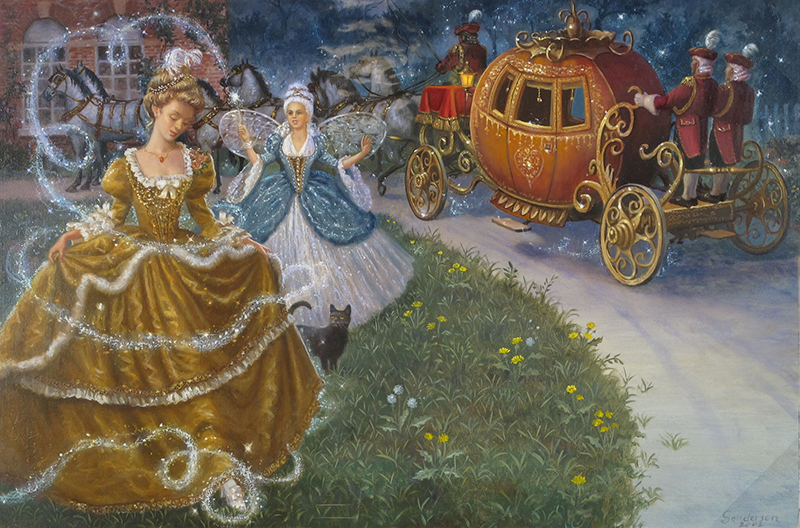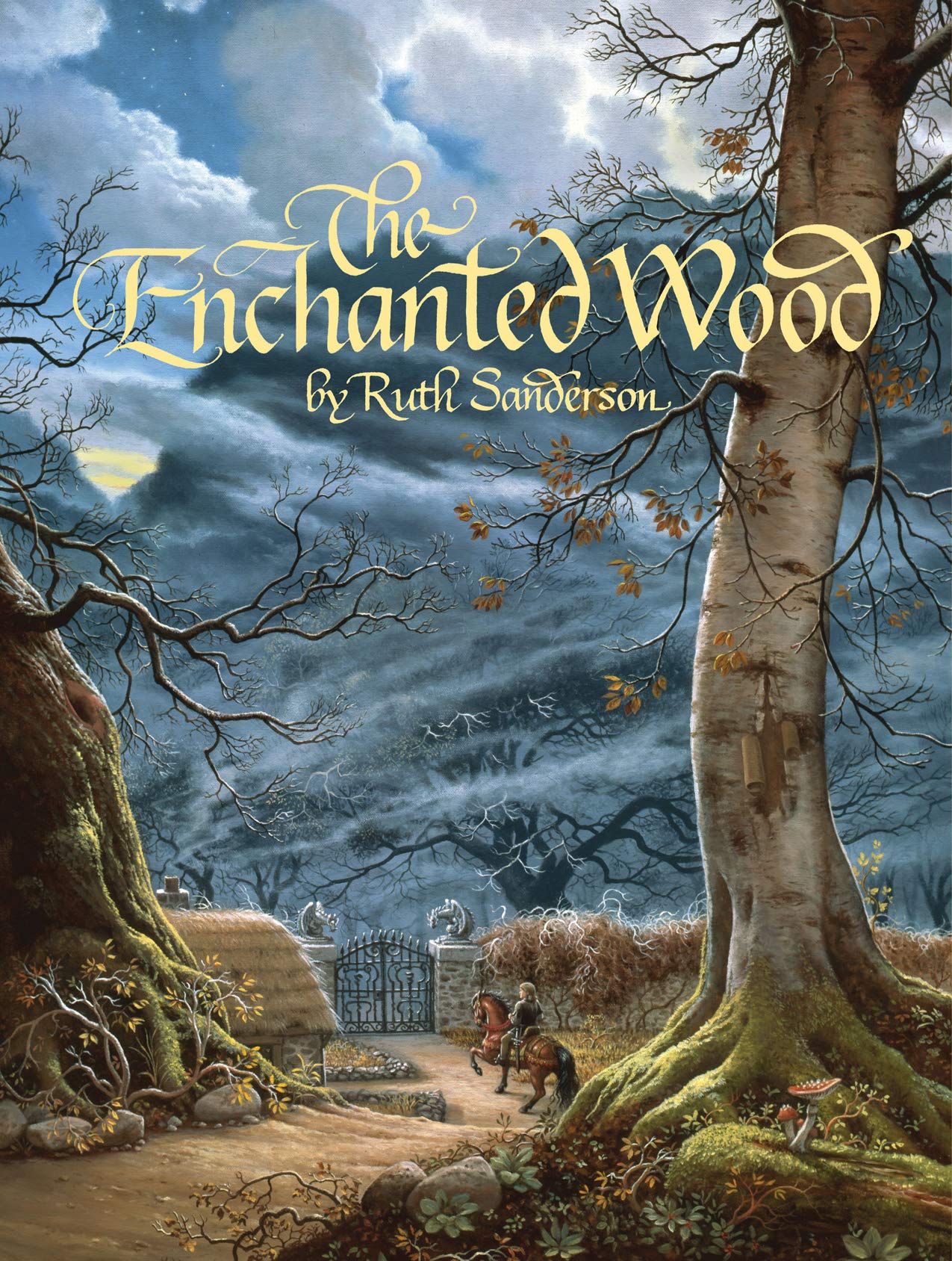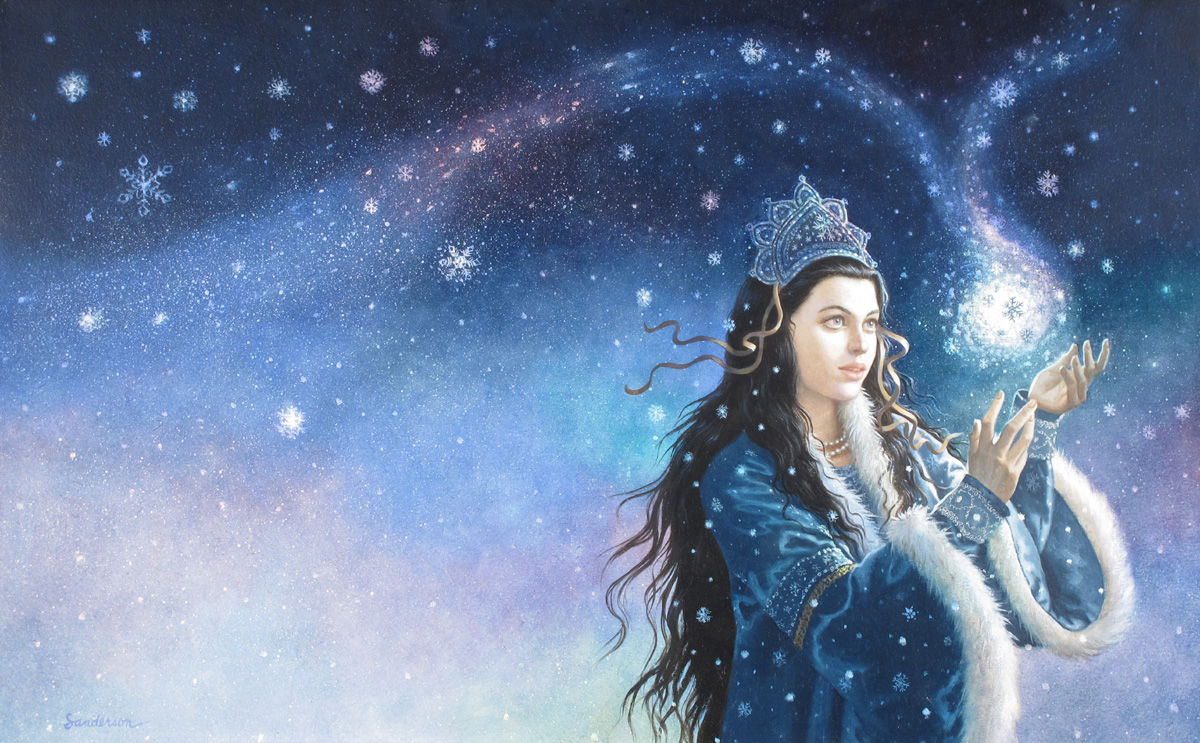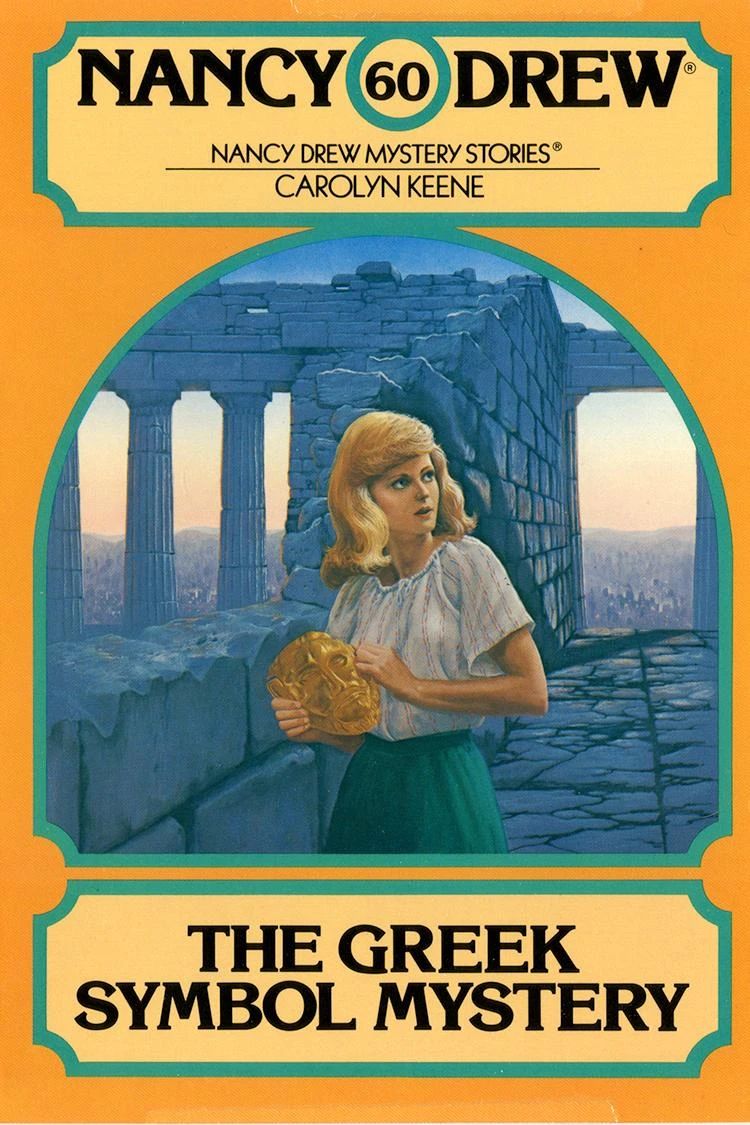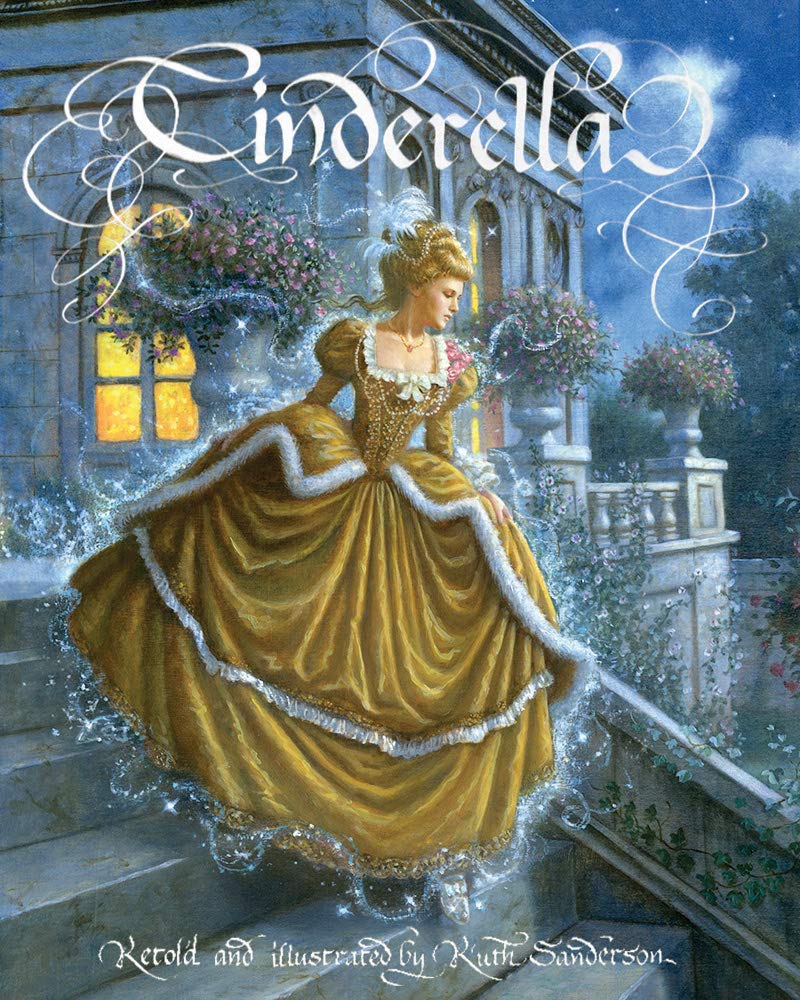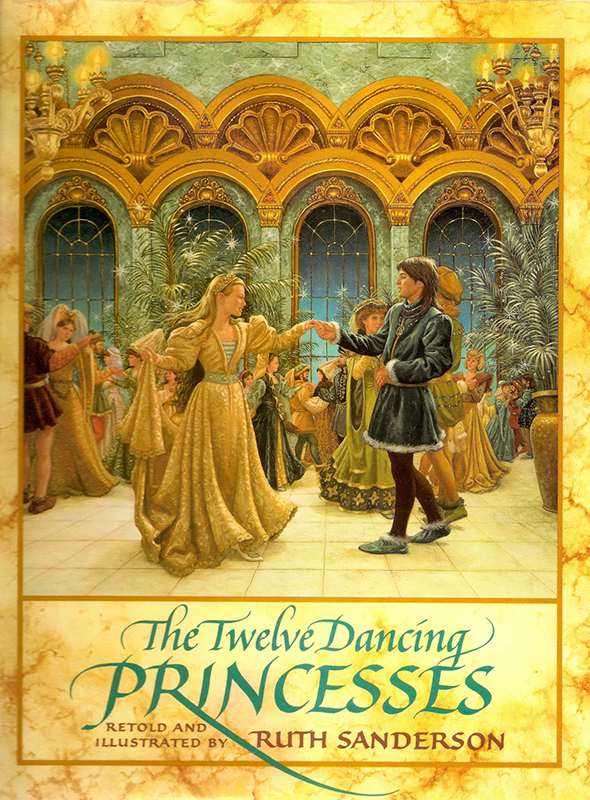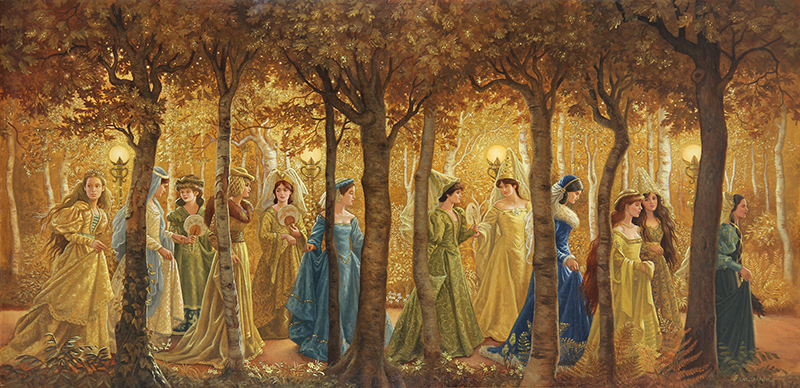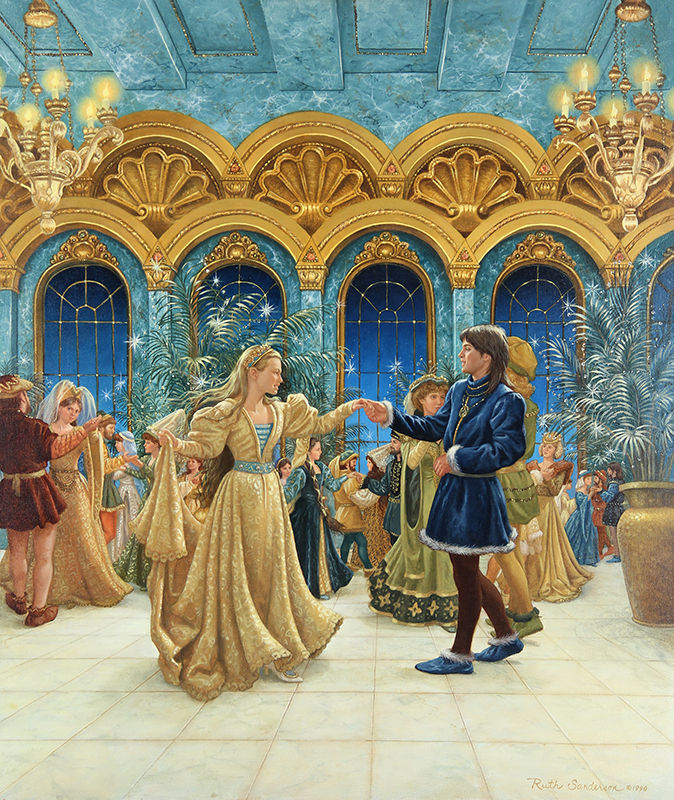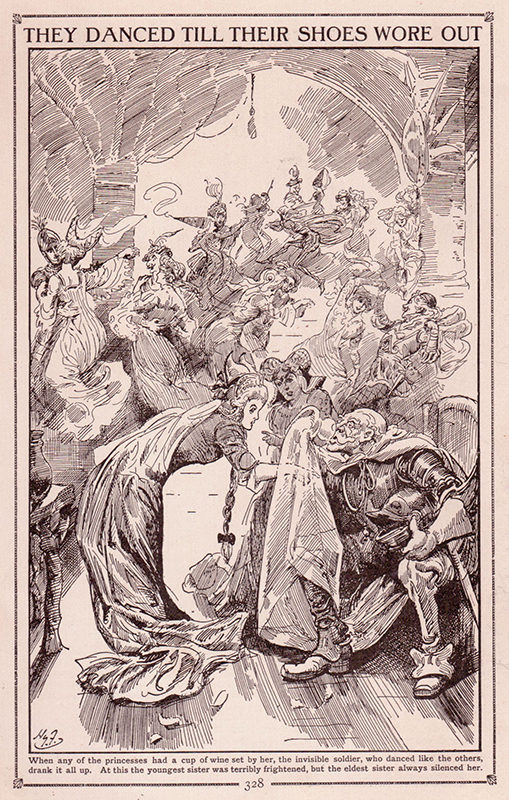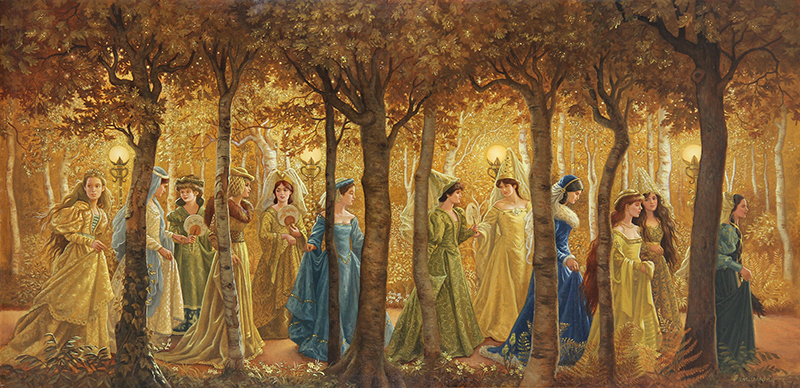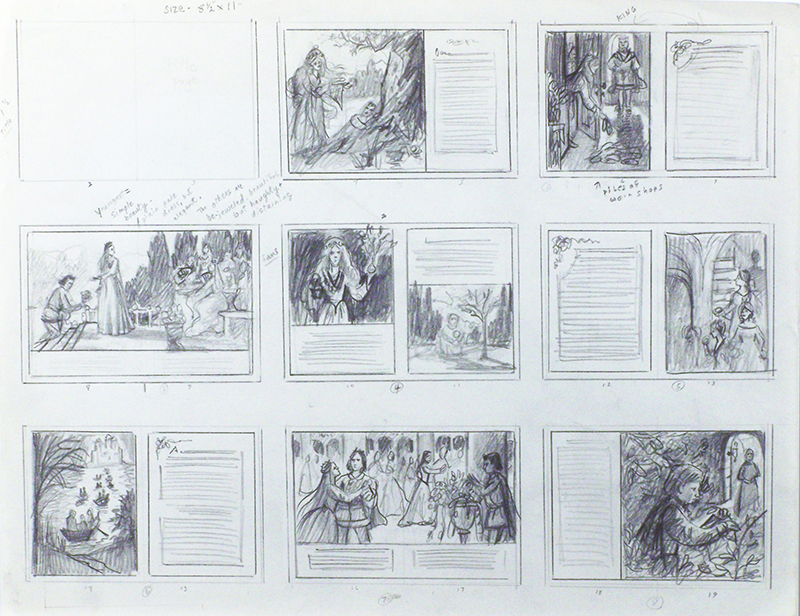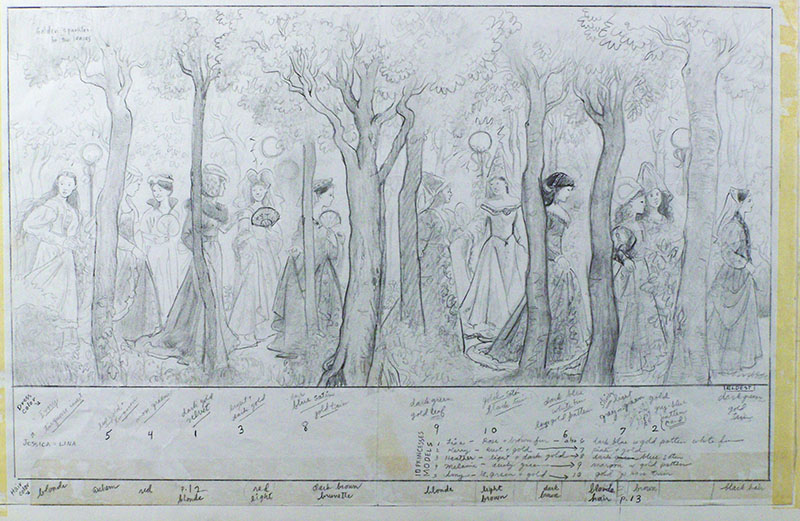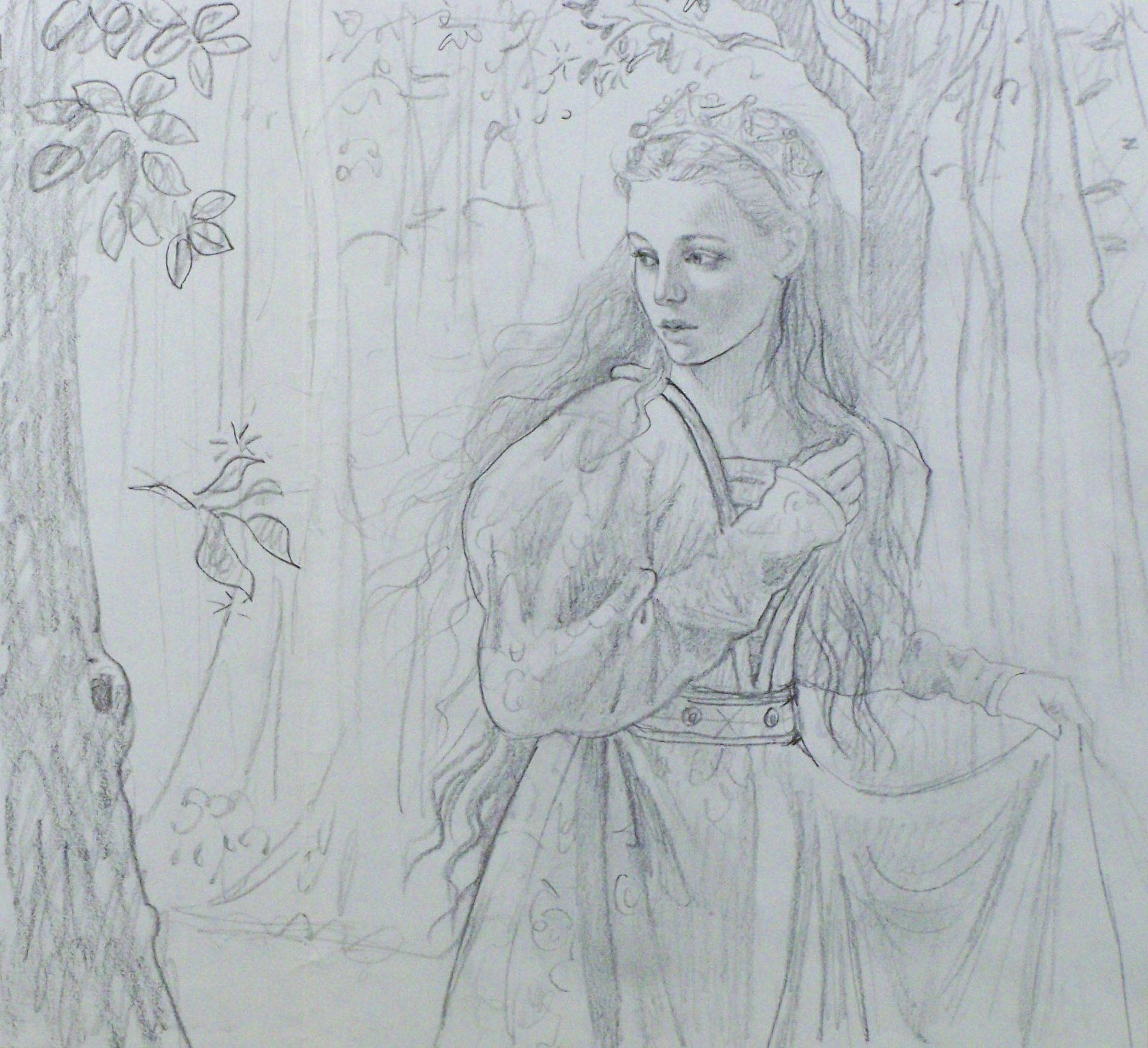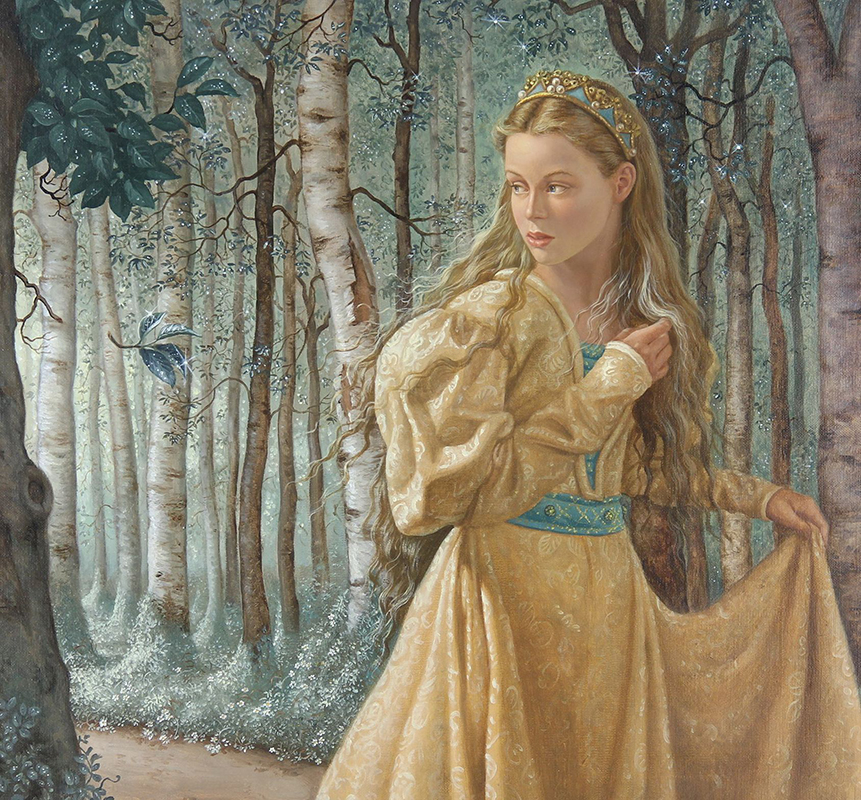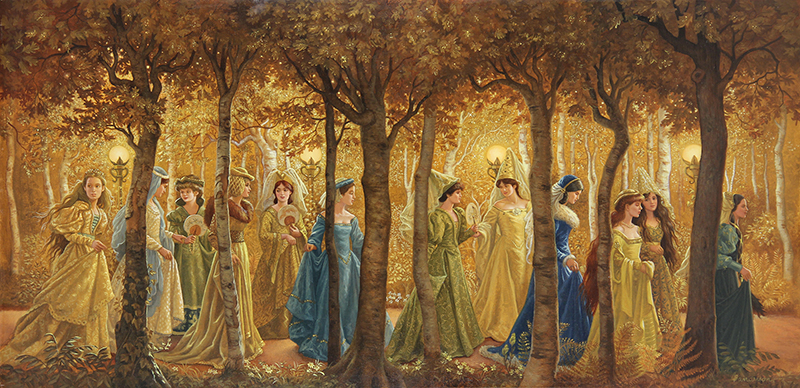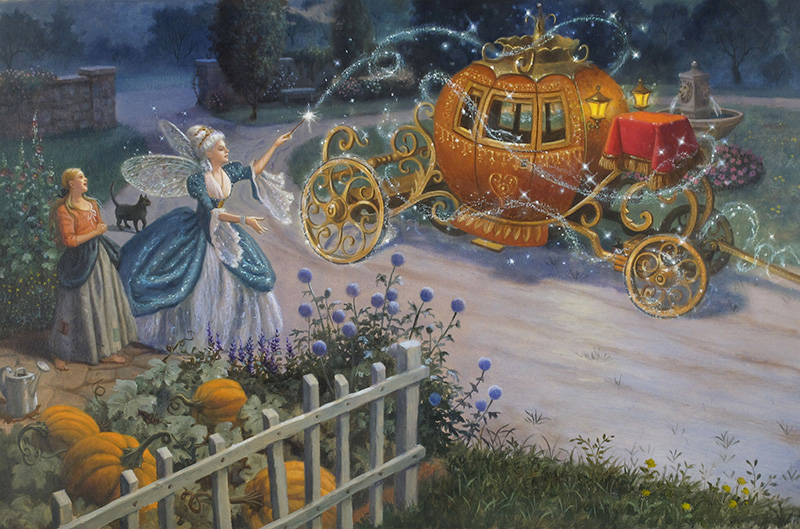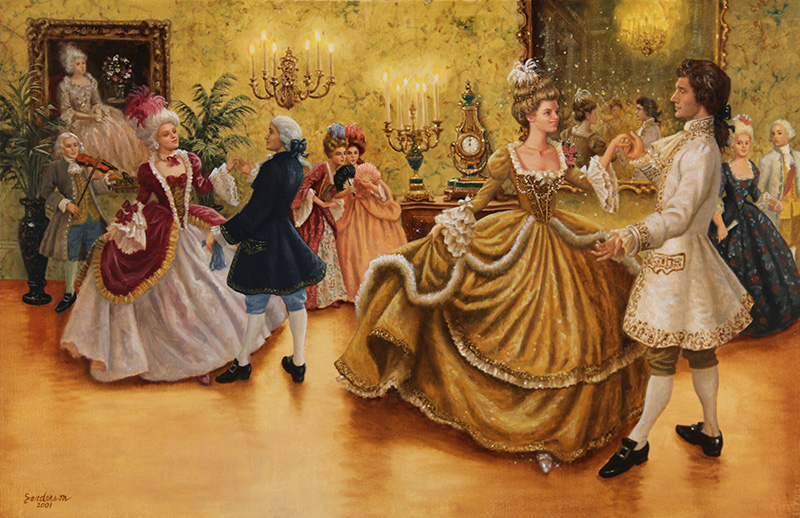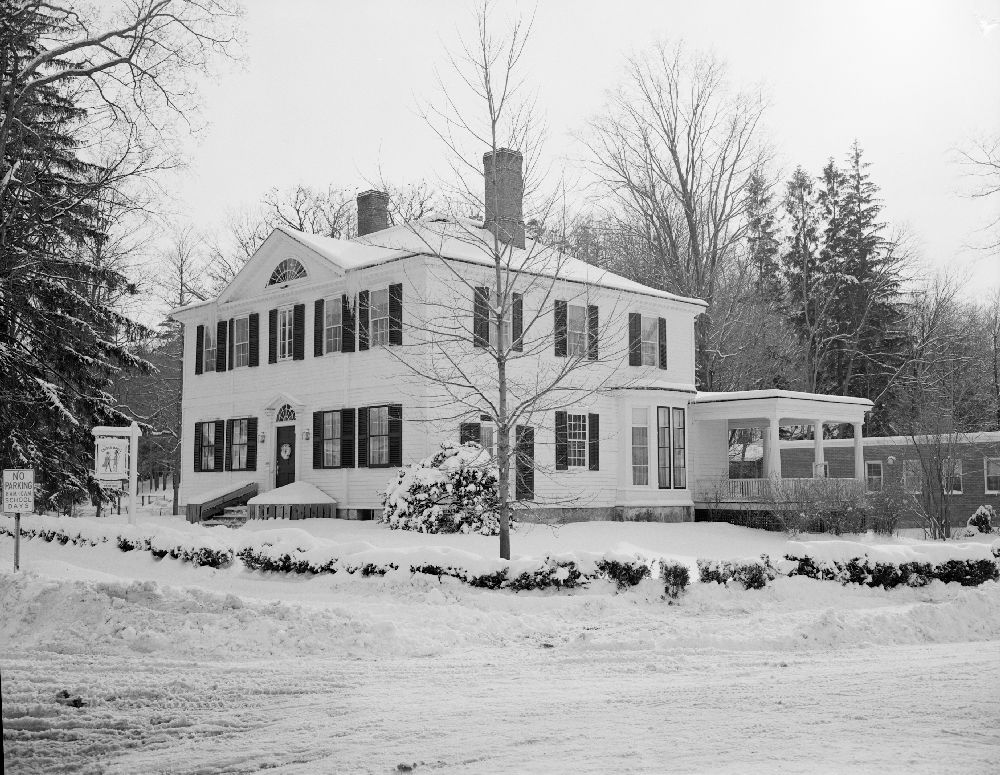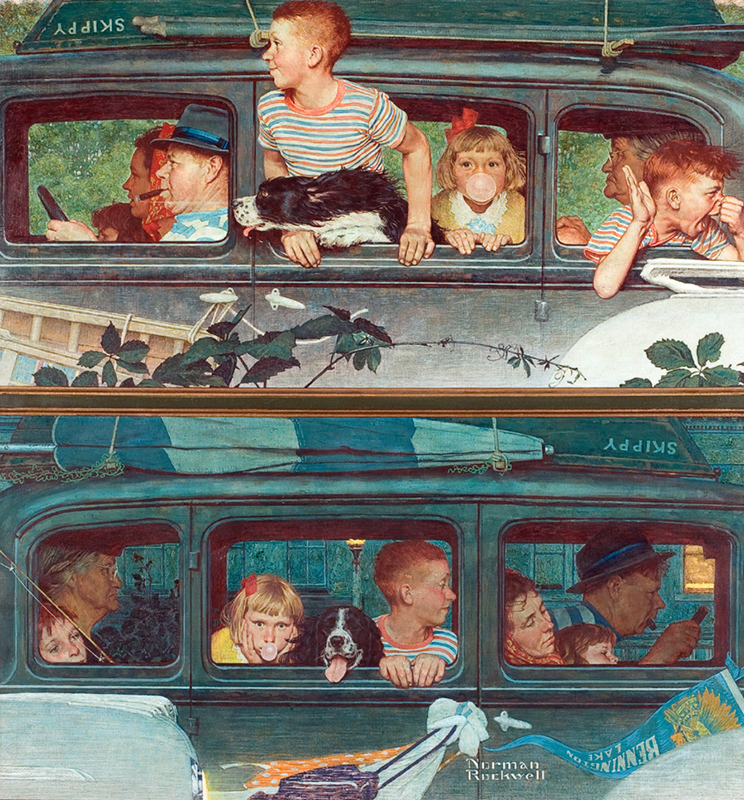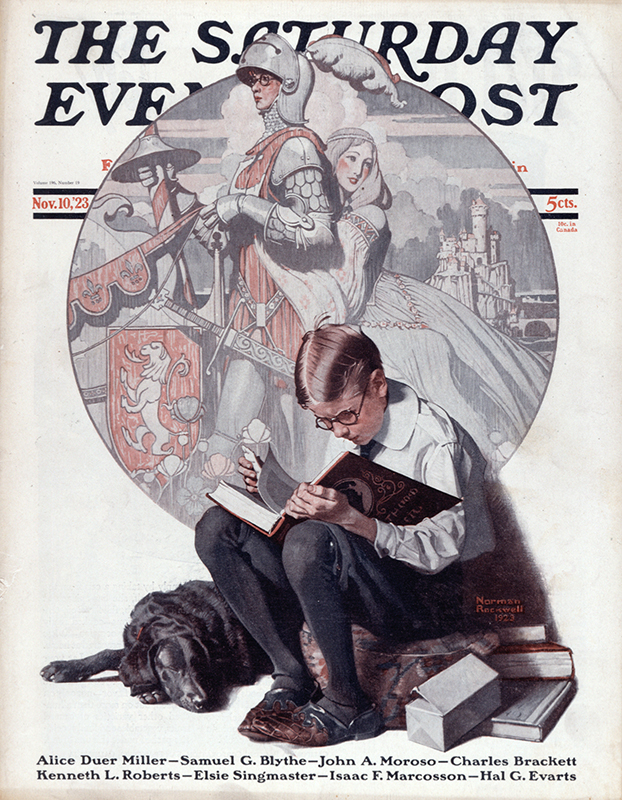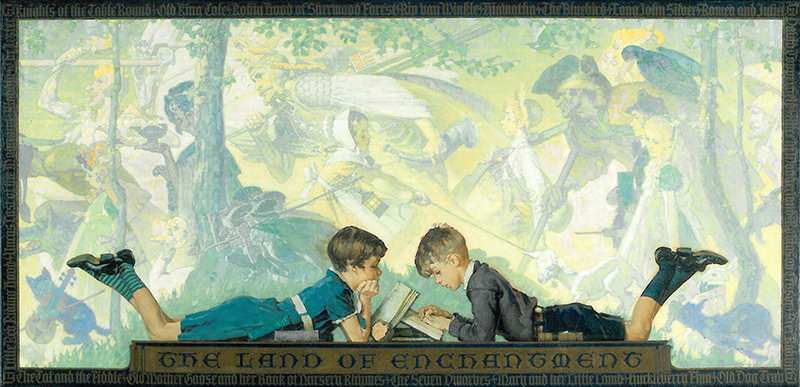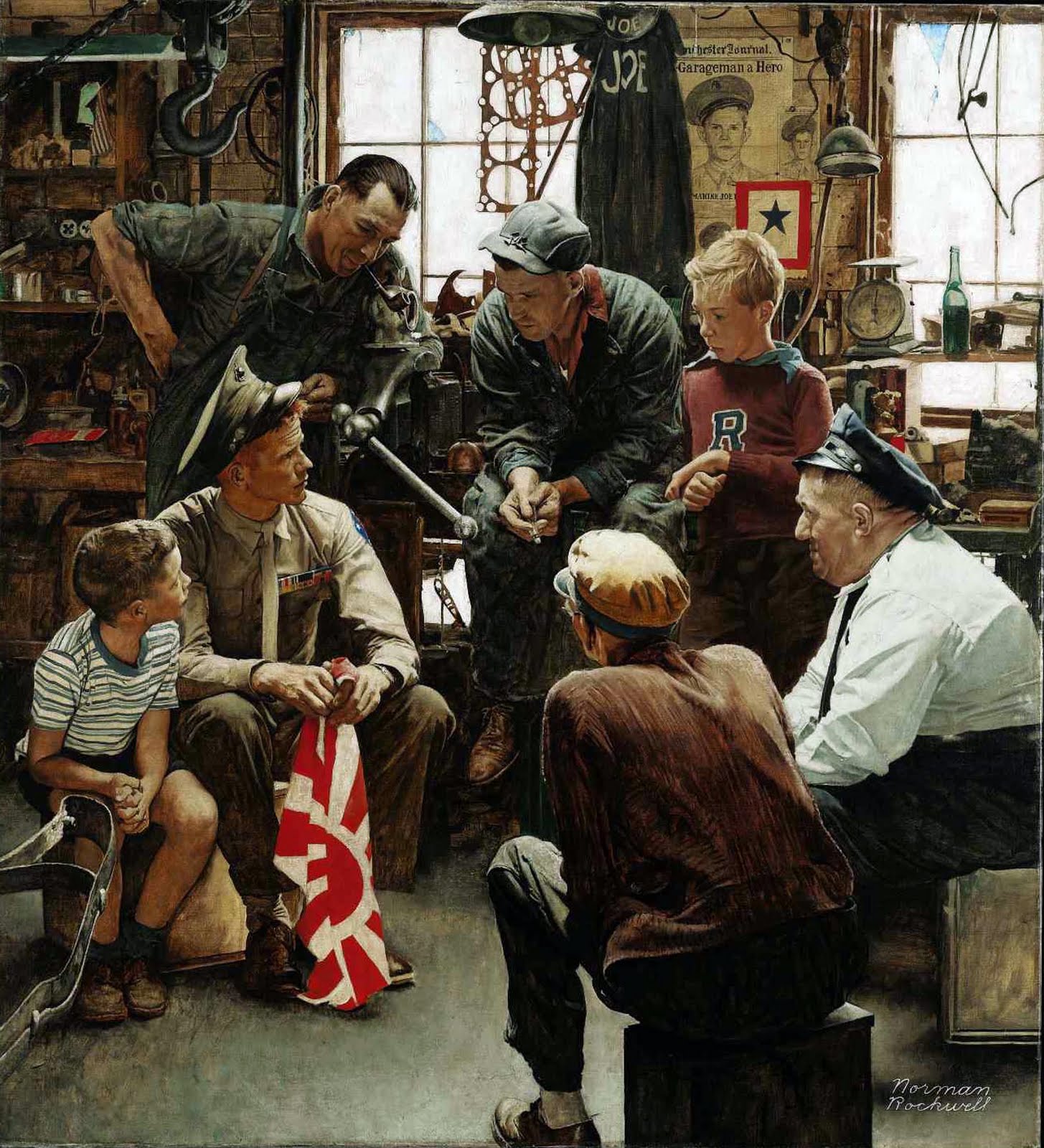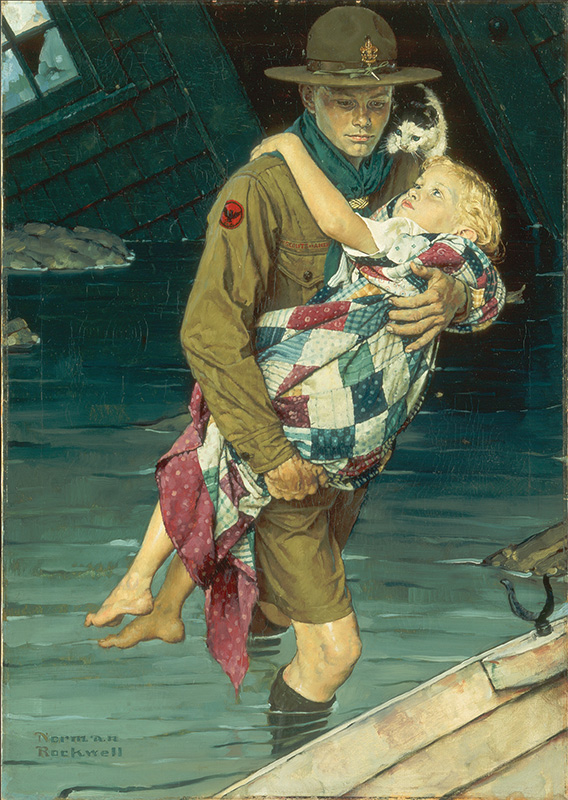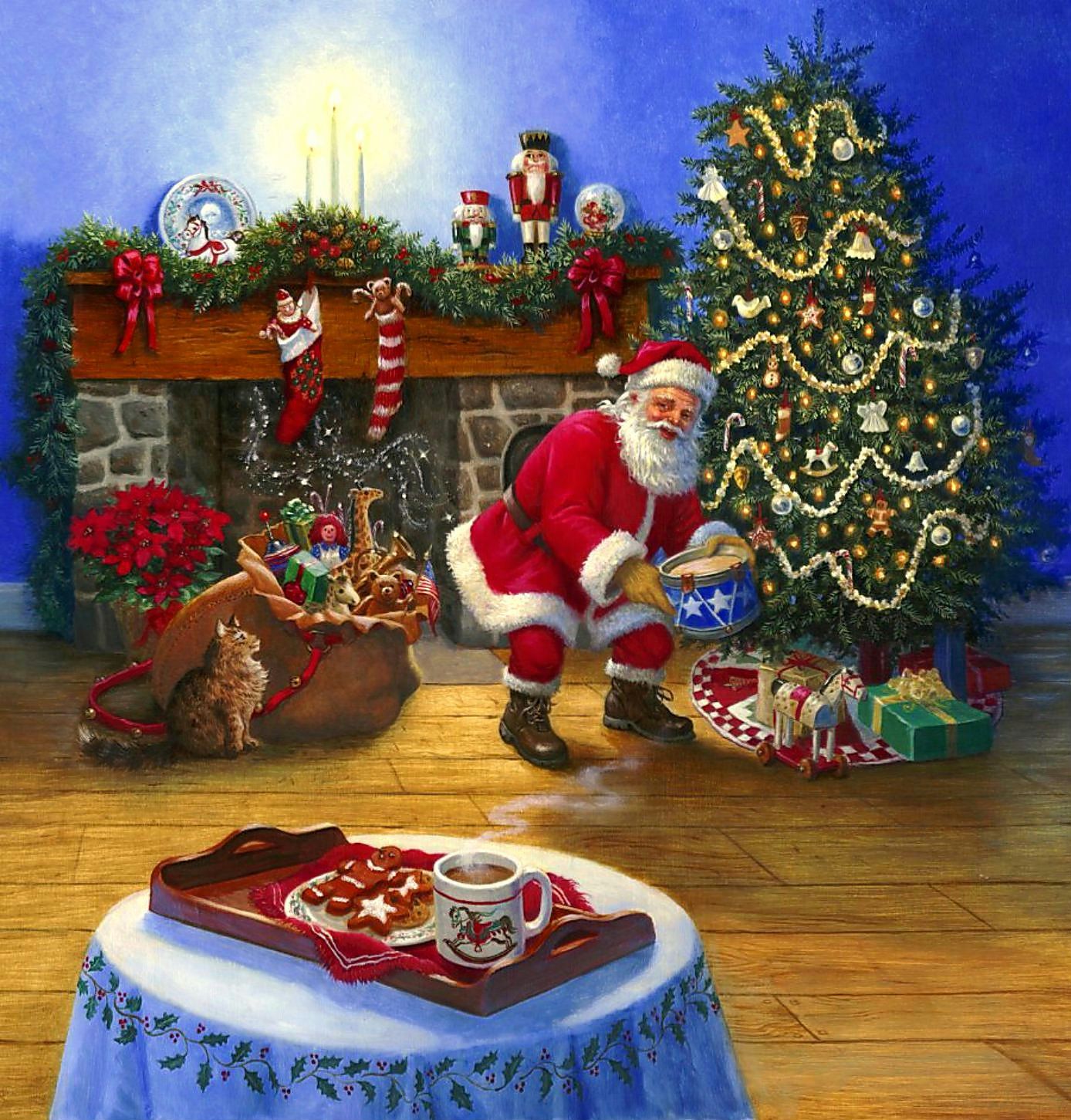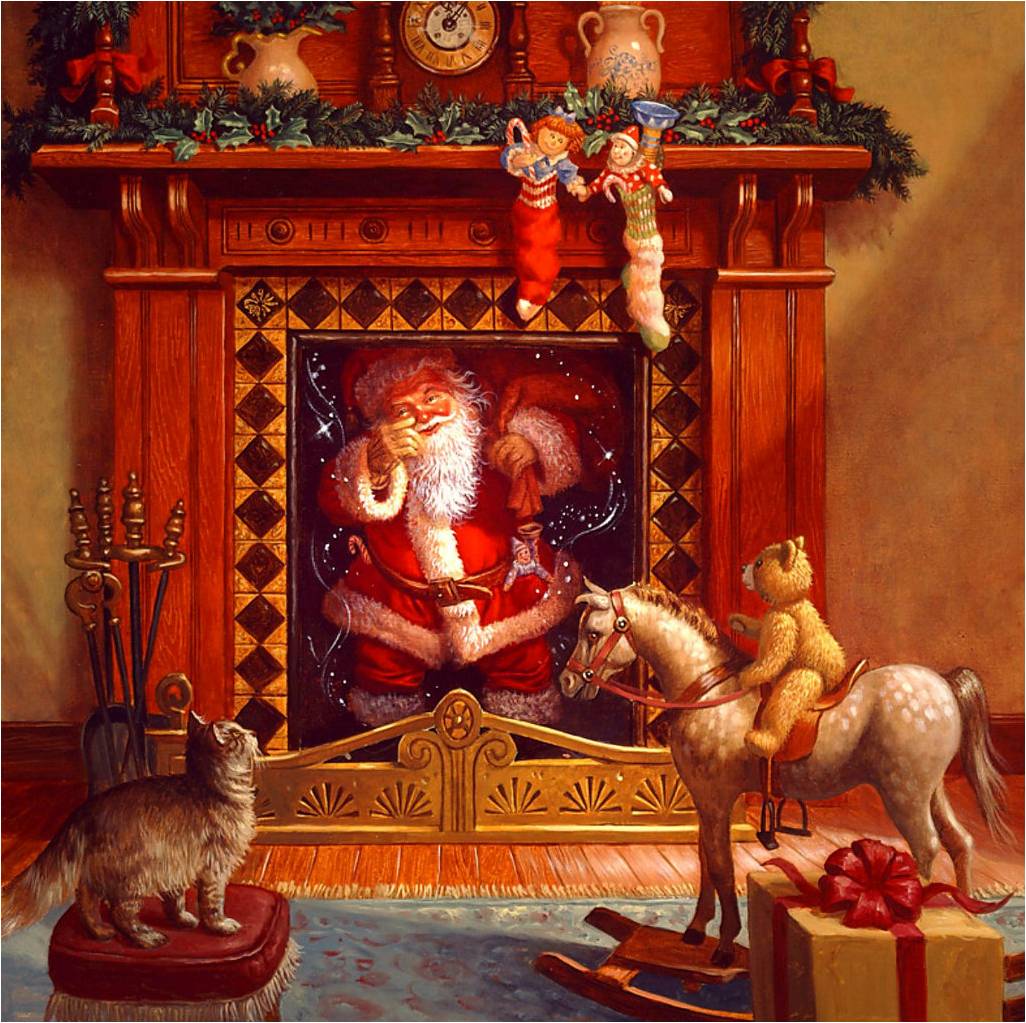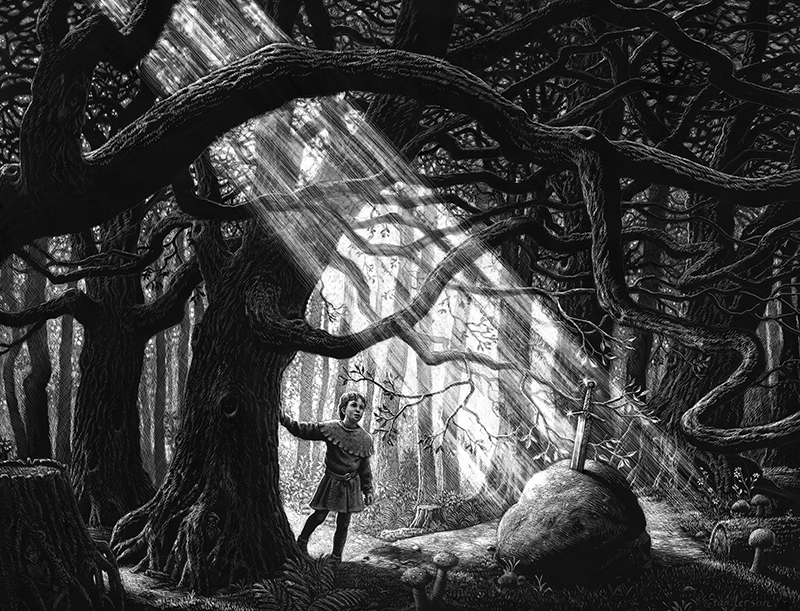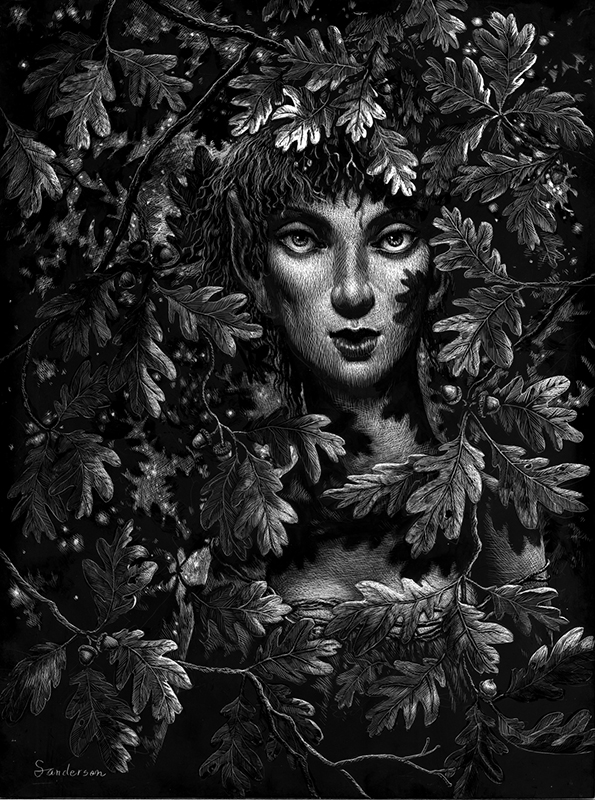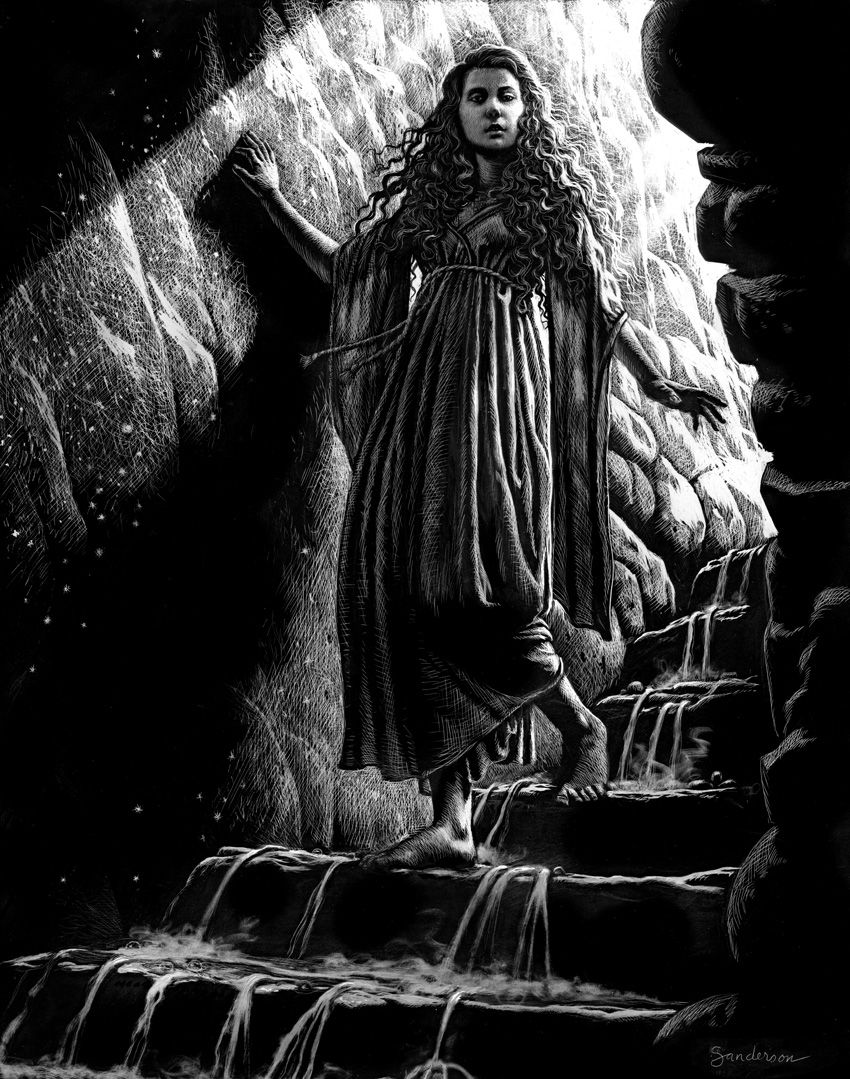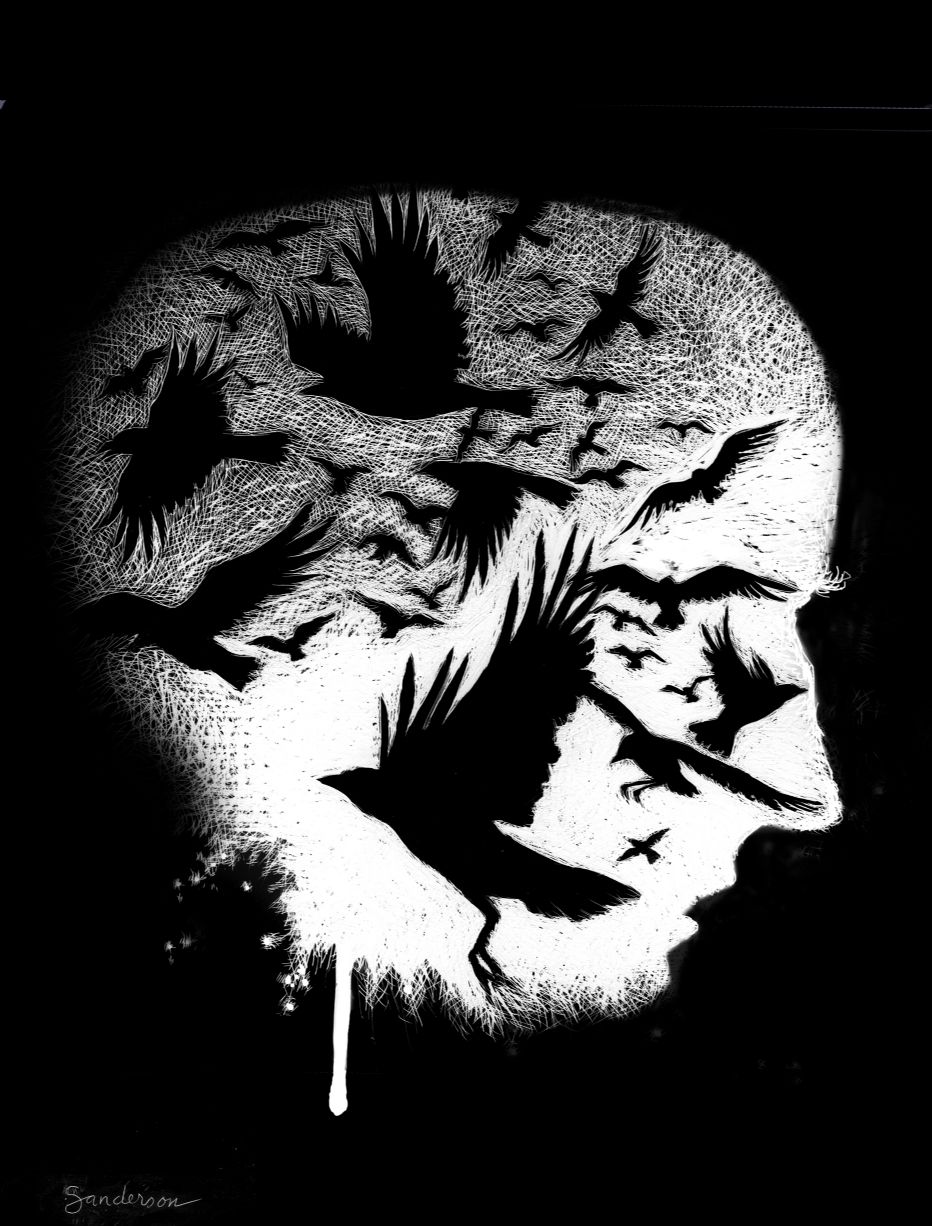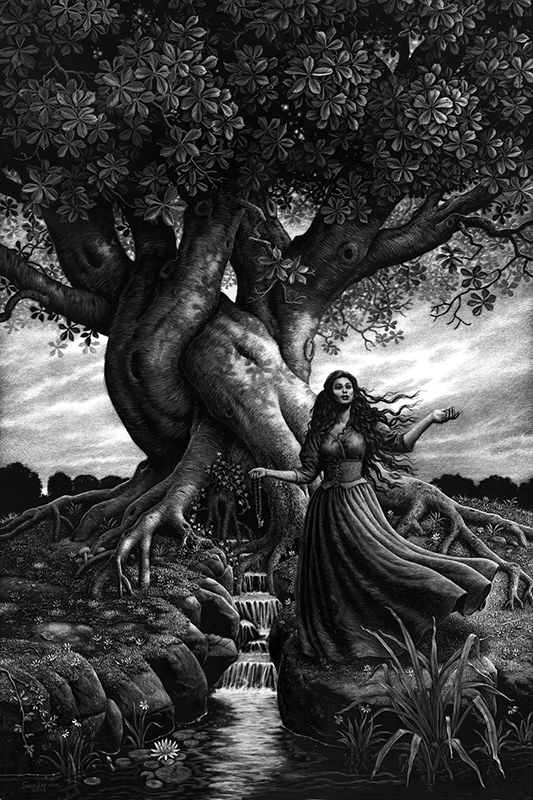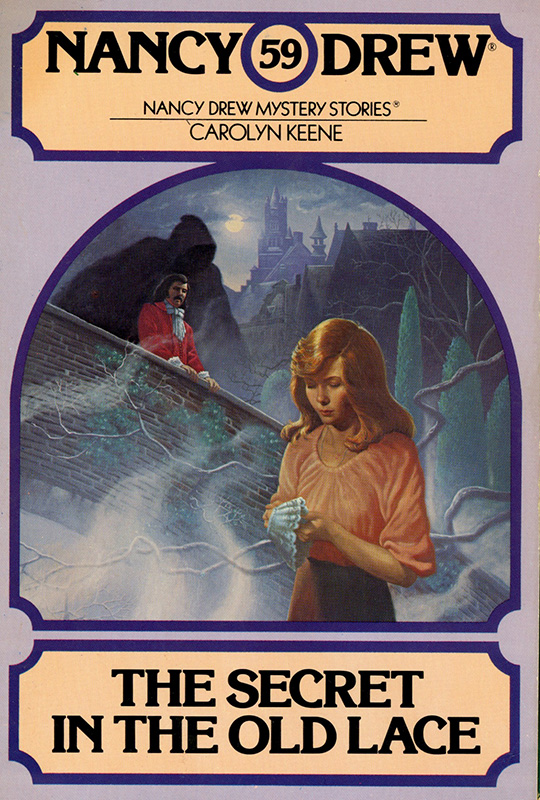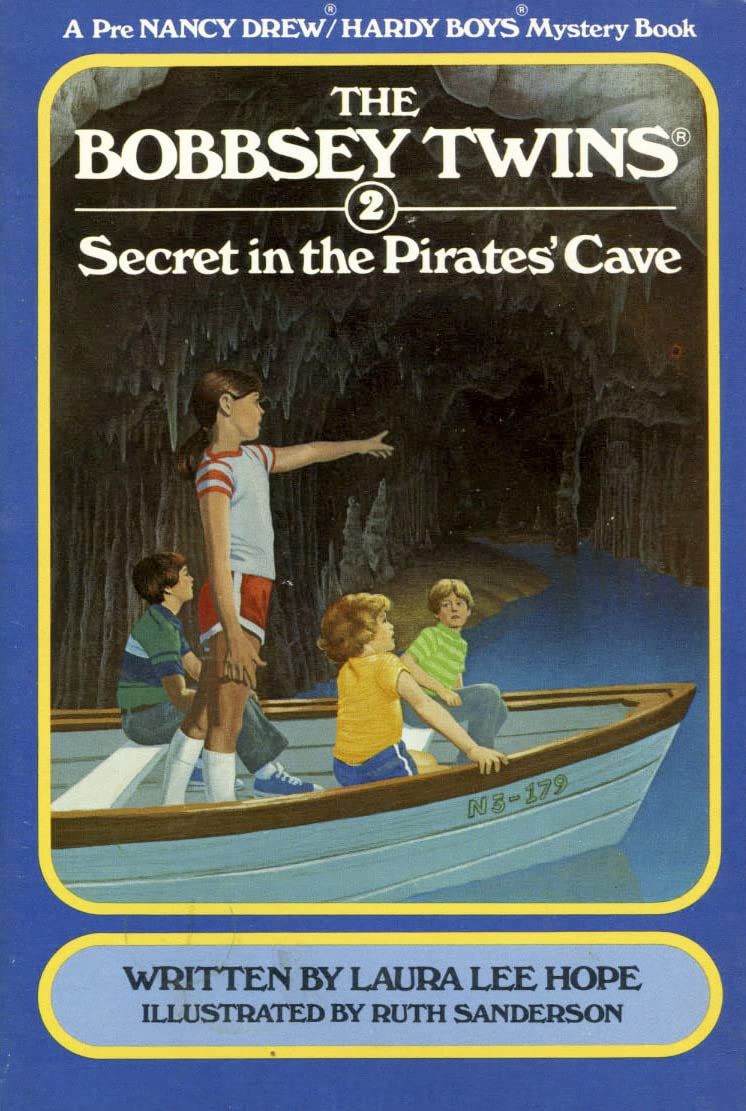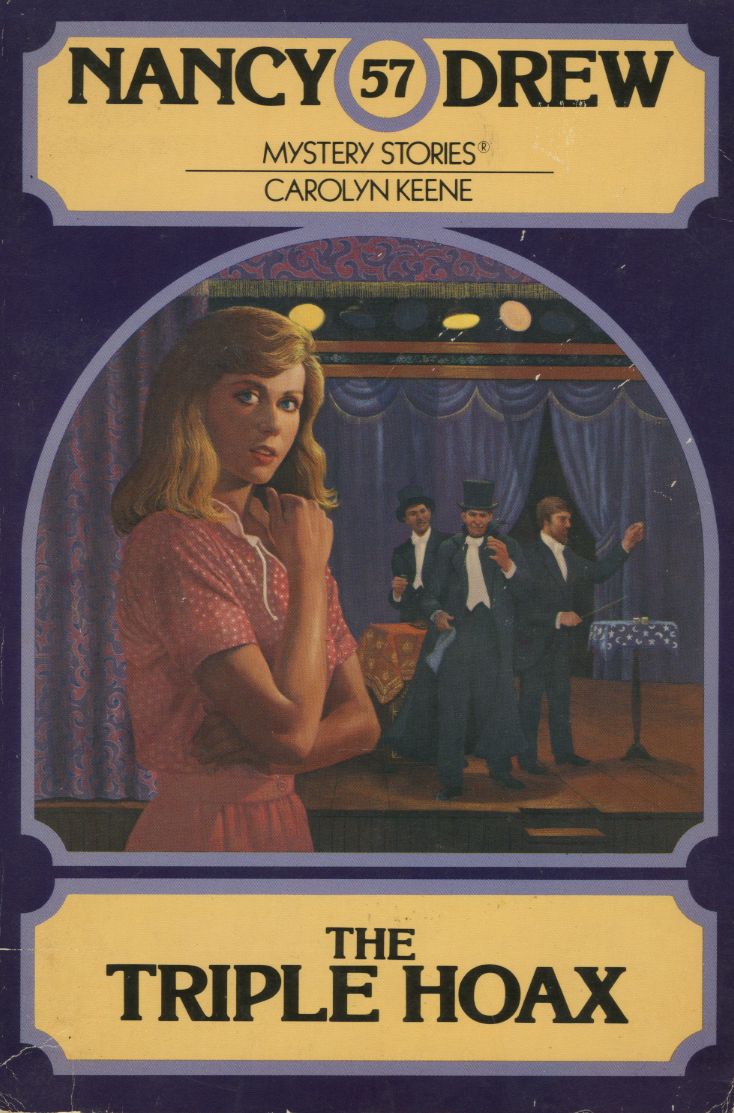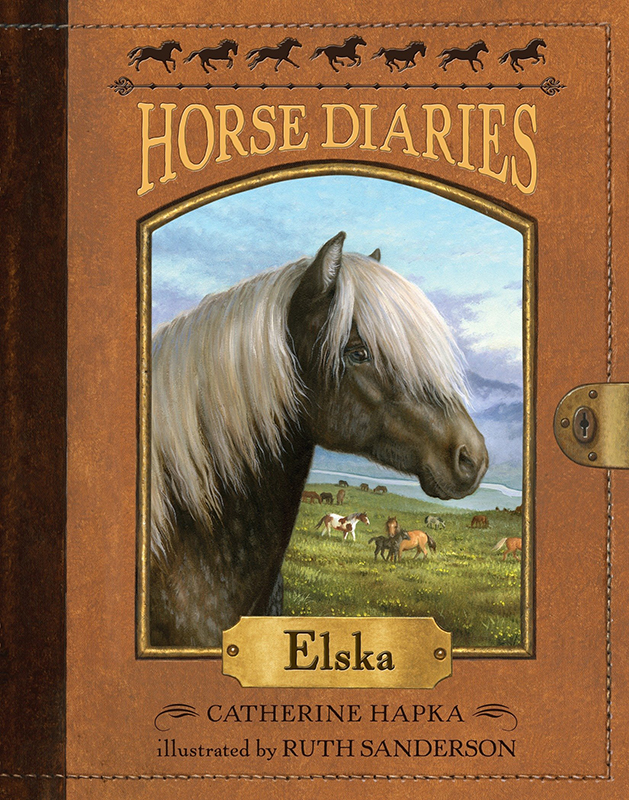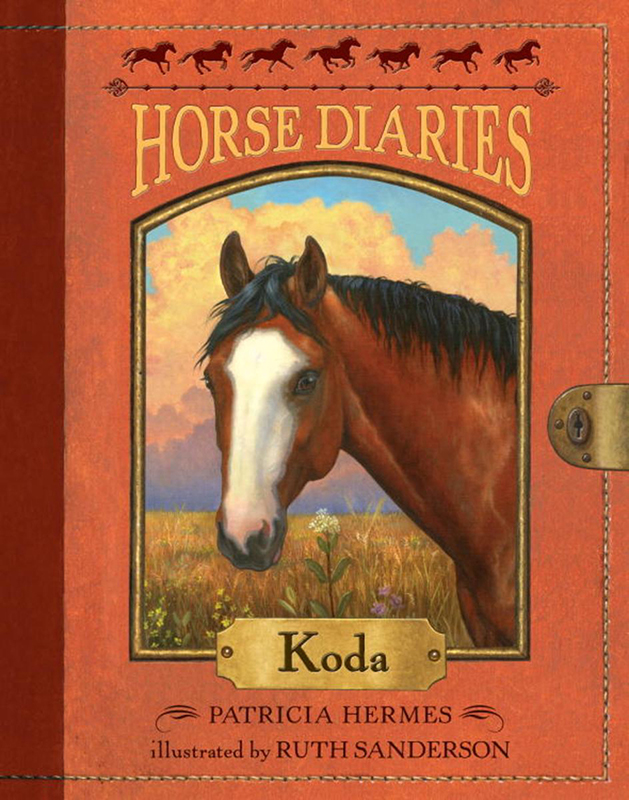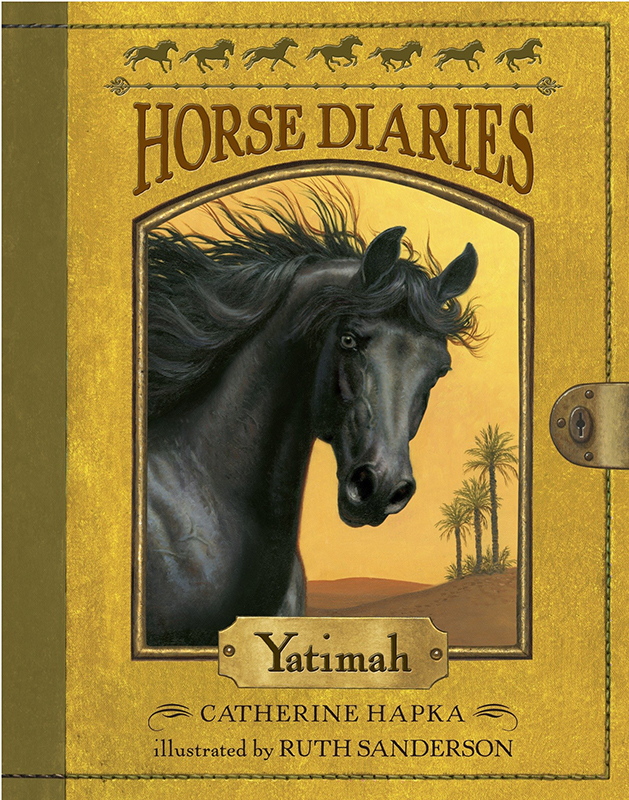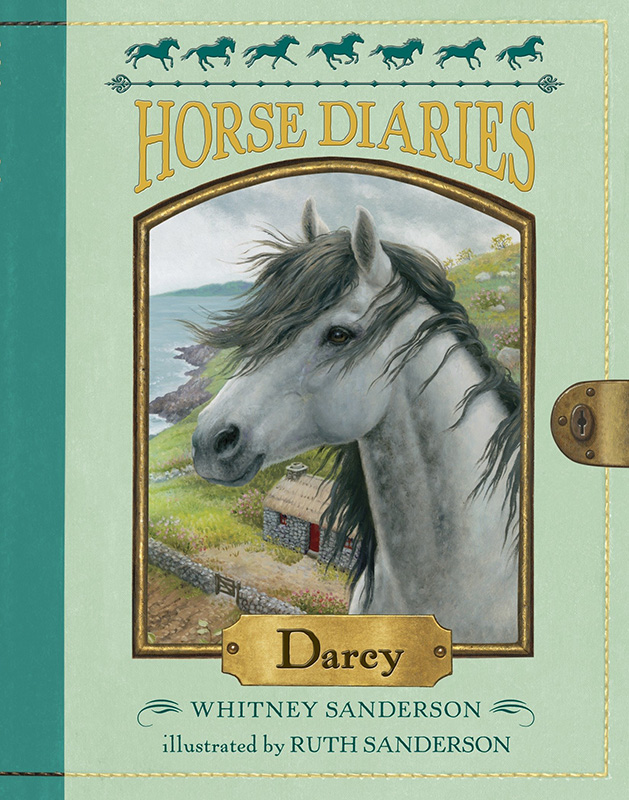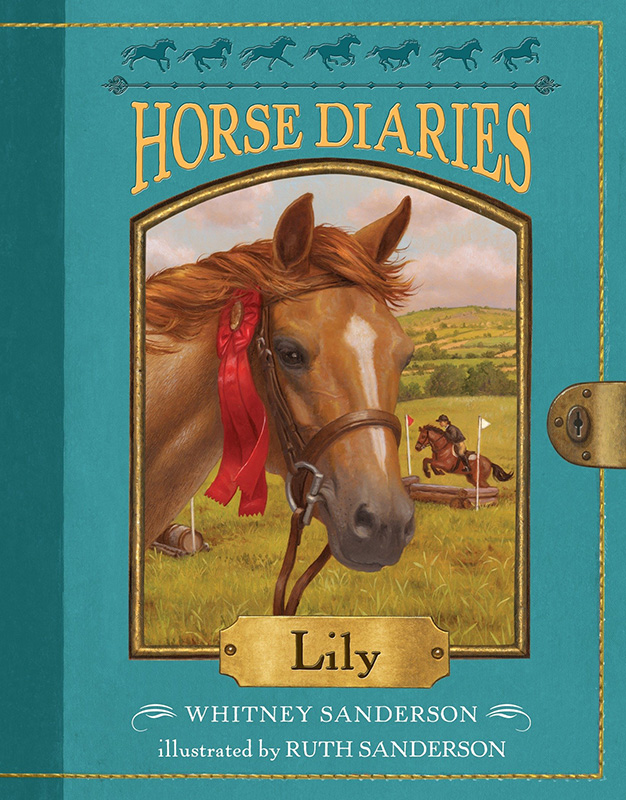Episode 05: Ruth Sanderson
Jesse Kowalski: Welcome to The Illustrator’s Studio. I am Jesse Kowalski, Curator of Exhibitions at the Norman Rockwell Museum in Stockbridge, Massachusetts. The Illustrator’s Studio is a weekly interview series, a project of the museum’s Rockwell Center for American Visual Studies.
In this episode of The Illustrator’s Studio we welcome Ruth Sanderson, a celebrated illustrator noted mainly for her work in the realm of fantasy and fairy tales, Sanderson’s artwork has appeared in more than eighty books. Her beautifully rendered paintings can be found in books such as The Enchanted Wood, The Golden Mare, The Firebird and The Magic Ring and The Snow Princess, which was nominated for two Chesley Awards.
She began her career painting covers for the Nancy Drew series and has illustrated numerous classic fairy tales, such as Sleeping Beauty, Cinderella and Goldilocks. One such book, The Twelve Dancing Princesses, was the main focus of a 2013 exhibition at the Norman Rockwell Museum, titled Dancing Princesses, The Fairy Tale Art of Ruth Sanderson.
Ruth, welcome.
Ruth Sanderson: Thank you, I’m happy to be here.
Jesse Kowalski: Now, I was very excited to include your work in our summer 2021 exhibition, Enchanted: A History of Fantasy Illustration. I selected a painting of yours, it’s an illustration from the 1990 book, The Twelve Dancing Princesses. That story is based on a German fairy tale that was published by The Brothers Grimm in their second volume of fairy tales in 1815 and your illustration clearly adds a lot more depth to the story. And I just wondered what drew you to that particular fairy tale?
Ruth Sanderson: That story was actually one of my favorite fairy tales growing up, and when I decided to start retelling fairy tales myself and illustrating them, that was the first one that the editor and I jointly agreed on and it was one of her favorite tales, too. The thing that I did, I did actually add some elements from the French version into the German retelling, so it’s not a strict retelling of Grimm, and this has kind of been my signature when I retell, I like to read different versions from…usually they’re European from different traditions…and weave my favorite elements together.
So the hero in this story is the French young hero who ends up with the youngest princess as opposed to the German, which was an old soldier who ends up marrying the eldest princess. And I thought that the modern child listener would relate more to the younger characters. And in terms of, you know, the depth of the story, like many fairy tales, it’s actually a coming of age story and the magical woods, which are just an amazing visual element. I mean, that’s what often appeals to me in retelling a fairy tale, is to find those visual images that will all be able to really expand on and make them look like they are real, like you could walk into those magical woods.
And to me, those woods feel like the transition, it’s the rite of passage really, from young women into adulthood. So that’s, to me, what is symbolic of this story, and it gives a depth to the story that I think is really important.
Jesse Kowalski: And as I mentioned in my opening, you’ve illustrated a number of books based on fairy tales. What is it about fairy tales that inspires you, and what are some of your favorite fairy tales?
Ruth Sanderson: Well, I did grow up spending most of my free time reading. I was kind of a shy child and happily we had in our bookcase at home, a copy of Grimm’s fairy tales. That was my father’s. My grandmother, his mother, was a librarian, so I also spent a lot of time with her. She took care of me sometimes and babysat, and I sat in the library and read books. But that volume of Grimm’s fairy tales is just, and I still have it, I just fell in love with them. You know, I could just fly away to a different place, it just filled my imagination. And what really solidified my love of fairy tales was actually playing at an abandoned theme park when I was young, down this dirt road near my friend’s house, a dead end, right near the border of a state forest, was an abandoned theme park.
I think they opened one summer and went out of business. There was a cottage there, to me it was the cottage of The Seven Dwarfs. And it just, I don’t know, it just made that fairy tale come alive in me, and I’ve loved it all these years. And what’s interesting is I never illustrated it. I don’t know, I didn’t feel like I was ready to illustrate it, to bring something new to it, or whatever. And interestingly enough, I’ve been working for quite a few years on a young adult retelling of Snow White And The Seven Dwarfs. And it’s called A Dwarf’s Tale, which is interesting because the cottage of, you know, I’m more interested in the dwarfs than I am in Snow White. Although I have to, you know, obviously make it a good story about her too, but my story is called A Dwarf’s Tale. So I’m very excited, it’s almost finished. So we shall see where it goes.
Jesse Kowalski: So a year after The Twelve Dancing Princesses came out, you wrote and illustrated The Enchanted Wood. And regarding that book, you noted this story grew out of your love of the woods. And a number of your works, and even a section of your website, is devoted to forests. So could you tell me how your fascination with forests and the woods began?
Ruth Sanderson: I’ve always loved trees and I’ve always loved the woods. You know, when I wasn’t reading, I was playing in the woods, at that abandoned theme park and other places in the woods, you know, Massachusetts is like full of great woods and trails and rock formations. We played on this big rock that we called Cap Rock. I’m not sure why it was called Cap Rock, but yeah. And I just have always loved the woods, loved old gnarled trees. And to me, you know, as an adult, looking at the symbolism, the woods are a wild place. And even here in Massachusetts, there are fox, deer, turkeys, fishers, coyotes, bears, bobcats, wolves, so many animals that you never see. And there’s an aspect of wildness that appeals to me, but at the same time, I feel safe when walking in the woods, because obviously the animals aren’t going to come and search me out. Except I just saw a sign on Mount Tom, where I can walk there from my house, saying “Beware of Rattlesnakes,” but they don’t want to be near us either, so I’m hoping I never meet one.
But yeah, I’ve always loved the woods and trail riding. My love of horses probably inspired me to become an artist. I started drawing them…wish fulfillment…couldn’t have a horse, so I drew them. Finally, my parents gave in when I was a teenager and I spent my teenage years riding in the woods with my friends at every opportunity. So the woods can be light filled, you know, I love riding or walking in the late afternoon when the slanting sun sort of hits the trees with golden light and it’s just transcendent. But then the woods can be dark, you can get lost in the woods. You know, there’s just so much symbolism there that as human beings, it’s just a goldmine of symbolism.
Jesse Kowalski: So what is your process for creating a painting from start to finish?
Ruth Sanderson: First it’s up here, it’s probably most artists, and I’m fortunate, I sort of imagine in living color, you know, I see it in my mind, I see the image. And usually I’ll do just a little thumbnail picture, very small, like two by four inches. In full value though, you know, notice in all my paintings, you see the effect of light. You know, maybe that comes from my love of the woods and seeing the light hitting trees and wanting to reproduce that. So, you know, always loved artists that work in that way and chiaroscuro, where everything is lit in a very dramatic way.
So when I do thumbnails, I always pick where the light’s coming from. Sometimes I’ll do a little sun on the corner and then draw it in full value, even when it’s this little. So I can then, as I expand and do a larger sketch, try to keep that initial sense of the light in the picture. And after that, if there are people which usually there are, for all my books I find models and costumes and do photo shoots, you know, set the lights up where, so it’s dramatic, and then I do a final drawing. But again, I usually have that little, that very small little thumbnail near me so that I don’t lose my initial idea about where the lights and darks are going to be in the picture. And then I do the painting.
Jesse Kowalski: How long does that take you?
Ruth Sanderson: Oh gosh. Well, the one that’s hanging in the show, The Twelve Princess in the Golden Wood, I believe that took five weeks to paint that one picture, but I have painted illustrations in three days. So, anywhere from three days to five weeks, really, depending on the size, the complexity, the style. Occasionally I’ll work in a slightly more painterly style. My version of Cinderella, I was actually studying a fine artist who paints beautifully, you know, kind of a little more alla prima. And I was trying to really paint that, not with the tiniest brushes I have, but a little more painterly. And then the reviewer said that it wasn’t up to my usual standard, so.
Jesse Kowalski: What do they know?
Ruth Sanderson: It’s like, not with painterly, it’s supposed to be like that.
Jesse Kowalski: Who are some of the artists that have inspired your work?
Ruth Sanderson: Oh gosh. Well, I started coming to the Norman Rockwell Museum when it was the little white house in the center of Stockbridge, I believe in art school. And, you know, always just…my jaw always drops and always has, even though he’s not painting fairy tales obviously, but he’s painting imaginary, well idealized worlds, isn’t he? And that was a great chapter in the book that I believe Stephanie Plunkett wrote about how, while his paintings aren’t strictly fantasy, they are idealized versions of what we could be. And in a way, that’s in a way what I’m trying to achieve too, is sort of like, you know, the ideal of trying to reach humanity’s highest ideal. It’s like, you know, we should try to be good people. That’s kind of basically it, and we should appreciate beauty as well.
So besides Rockwell, I love the Hudson River School landscape painters. I just always go to museums and go right to the landscape section. I love some Russian artists that are landscape painters, I love the Dutch landscape painters, the English Pre-Raphaelites actually did do a lot of fairy tale painting, and I love their style. And I’ve always loved the academic style of art and just gravitate toward who is ever good, and just so many contemporary artists as well. But I tend a little bit to look back at the older artists and fine artists.
Jesse Kowalski: So, I first met you at the IlluXcon Conference a few years ago, and I was very familiar with your work at the time, but I’d never actually met you. And so when I first came up to you, you were so welcoming and you were so excited to meet me and talk about fantasy. So I just wondered, after so many years and so many books and so much work that you’ve done, what keeps you motivated?
Ruth Sanderson: That’s a difficult question to answer. I guess it’s just that I was born an artist and was born wanting to draw and paint and convey my love of the beauty of the world, my love of the mystery of the world. To me, fantasy is a little about mystery and in so-called fantasy or imaginative realism, as some people call it, you can convey things that are symbolic. I love painting the Green Man, who is like an ancient symbol of the spirit of life. You know, there are things that have always interested me and I can’t imagine not being interested in the mystery of life and trying to convey my feeling about that until I can’t see anymore, or my hand doesn’t move.
Jesse Kowalski: So many of your books pertain to specific times in history. How exact are you in replicating the look and feel of the time periods when you’re designing the works?
Ruth Sanderson: Well, for many of the fairy tales I’m sort of setting, you know, I’ve got a library of books on costume, so, you know, often I’ll pick more or less an era, I really liked the 15th century, that was what The Twelve Princesses was based on. And I’m lucky that I connected with a costumer who’s also very, very versed in the authenticity and studied the history of costume. So she actually created the costumes for that book. I wouldn’t have known there were like ten different kinds of headgear that people wore in the 15th century.
So the princesses don’t all have the little conical hats that you think of princesses in history wearing. So, but I’m not absolutely slavish about it. You know, this is fantasy, it’s fairy tales, so I don’t know if anybody’s going to go checking in their costume book to see whether I got every detail correct. But I try to be in the ballpark.
Jesse Kowalski: A large section of your website is devoted to images of Christmas. So I wondered, what are your favorite memories of Christmas growing up?
Ruth Sanderson: I lived in the same house with my folks for eighteen years before I went off to college. So, we had a big living room and I remember where the tree was and I had a brother and sister and yeah, I just remember happy times being with them. And, you know, my mom always made turkey at Christmas as well as at Thanksgiving, and I loved her cooking and the smells of, she made steamed pudding, which has a rich aroma. You know, I can smell it now. So yeah, just happy times with my family when I was growing up.
Jesse Kowalski: And what’s Christmas today like in the Sanderson household?
Ruth Sanderson: Well, we actually often spend it with my sister and she’ll make the big meal, because we like to be off the hook for making big meals. And my husband’s a better cook than I am, so he usually cooks and he’s glad to give her the reins. Yeah, I do a little decorating, not too much. I actually illustrated, and continue to illustrate, a series of big collector holiday plates for Lenox China in a Christmas theme. You know, sometimes it’s just a scene of a covered bridge or what have you, but I’ll decorate with them on our mantle. And I have a very, very small tree on a very tiny table, so the cats can’t knock it over.
When we used to have a larger tree they’d just rip it down, so unfortunately I can’t do a big tree. And now this year, our grandchild lives very close by, and we enjoyed the first Christmas with a child, a very young child, for the first time and I look forward to many more. Yeah, it was really enchanting with him.
Jesse Kowalski: That’s great. I noticed your background is done in scratchboard. In recent years you’ve been using the scratchboard technique more and more, it seems. Could you describe to listeners how scratchboard works are created?
Ruth Sanderson: The way I do scratchboard is usually to purchase a pre-inked board. So this is a piece of Masonite or hardboard, coated with white clay, and then they spray it with a number of coats of India ink. And then you take tools such as my favorite tool, the No. 11 X-ACTO knife, you transfer a drawing, and I just use black transfer paper, graphite transfer paper, put my drawing on top and trace my drawing onto the board. And graphite actually shows up lighter than the blackboard, so I can just tilt the picture and see the lines.
And then based on the sketch that I’ve done, which shows like the light and dark areas and my reference pictures, you know, if it’s a model or sometimes I’ll have a stack of different background references for backgrounds, and then I just laboriously start taking away the light areas, which to me feels completely natural because if you’ve been listening to how I think, I think in values, I think in the effect of light on things, so it’s natural to me to draw where the light areas are. Whereas some people, the scratchboard is not for them, they want to draw outlines, and I don’t do that.
Jesse Kowalski: And if you make a mistake, how difficult is it to fix it?
Ruth Sanderson: Easy, India ink, you just ink the thing back in and scratch it back out. The nice thing about these boards, which are made by a company called Ampersand, is that the white clay underneath is very thick. So once you scratch away, you’re just scratching to a white surface and then you can take a pen or a brush. I’ve lots of little pens, in fact, if you want detailed tree branches against a white sky, you can scratch away completely the white and then draw the branches back in. So a lot of scratchboard is the process of scratching and inking and scratching and inking. And you can crosshatch back in with the pen, so it’s really quite forgiving.
Jesse Kowalski: Early in your career you illustrated the covers for several books in two teen mystery series, Nancy Drew and The Bobbsey Twins. Were you a fan of those books growing up, and did your covers at all update the stories for a new generation, or did you try to keep them more like the original?
Ruth Sanderson: Well, I did read Nancy Drew. I tended to prefer fantasy, fairy tales, horse stories, but my sister had lots of Nancy Drew books. And interestingly, she’s still a reader of mysteries, her favorite genre. But I read all her Nancy Drew‘s growing up. And I was a fan, I liked them a lot. One thing you might not realize is that the stories I illustrated were actually a continuation of the series. They were newly written, it was a case of a new company taking over the series, and they were working with the Stratemeyer Syndicate who owned the rights to it. So they were given the rights to continue writing the series. And so the stories I was working on were all new and they wanted Nancy to have a slightly more current look, sort of current, but timeless. So I worked very hard to try to give them the look they wanted.
Jesse Kowalski: Since 2009, you’ve illustrated a series of sixteen books titled Horse Diaries, some of which have been written by your daughter, Whitney. What attracted you to the series and how was it working with your daughter?
Ruth Sanderson: Well, going back to my love of horses, I illustrated The Black Stallion covers for Random House back in the late 1970s. And over the years they’d asked me to do a number of different horse books, so I actually did quite a few, sort of standalone or series of two horse stories for them, and then in, oh gosh, I’m not sure what year it was, well, it hasn’t been quite sixteen, maybe about ten years ago, they offered me the Horse Diaries series, which was written by, I think at that time four, they had signed up four different writers to write the series and they had the first, I believe four books planned. And at that time, my daughter, Whitney, was a budding writer and a very good writer, and I asked them if they would be willing to look at another writer for the series. And happily they were, they loved her work and she became one of the authors in the series. And I believe she might’ve written more books in the series than any of the other writers.
They did ask her to write five titles in all. But it was fun, it was fun. And our own horses got to pose for some of the books in the series. So that was especially nice.
Jesse Kowalski: Until the 1970s, with some notable exceptions, illustration has been a field largely dominated by men. I was wondering if you found it at all difficult to break into the field and maintain a career in illustration, and have you experienced any kind of discrimination in your career?
Ruth Sanderson: Oh yeah. So it’s interesting you say the ‘70s because that’s when I went to art school and, let’s see, I believe it was early in my final year of art school, I had a portfolio, this, that, and the other thing in it, you know, the typical art school samples. They weren’t horrible, but you know, they weren’t great. And I didn’t know at that time what area of illustration I wanted to go into, I just wanted to try to earn a living as an illustrator. So I made an appointment with two advertising agencies. Both art directors basically told me to go home and get married, that I didn’t have enough talent to work in the field.
So I went home, I didn’t give up or get married yet, but I got mad and said, you know, “I’m going to prove I’m worthy to be in this field.” And I just started working harder and harder. And then the illustrator, Mark English, who was a very well-known editorial illustrator, came and gave a talk at the art school I was in, and gave a contest and Don Maitz and I won like first and runner up. He actually won and I got sort of runner-up. But the Dean got a call from Mark English one day, asking to speak with me, and he asked me if I wanted to come work for him. So I did that for about the first six months after art school and kind of learned that technique, and then I started getting work on my own, but I also had been contacted, or had seen a children’s book agent and realized that I really actually liked illustrating the stories more than just doing an editorial piece or an advertising piece. I liked narrative illustration.
So when she started getting me work, I was very happy to enter into the children’s book field, which is actually dominated by women. So in that field, I had no problem at all, most of the art directors were women, the editors are women, most of the artists are women, you know, with some exceptions. But, I think there were plenty of women in that field, so really, there’s not a lot of discrimination.
Jesse Kowalski: Well, that’s all the time we have, Ruth. Thank you so much for joining us.
For more information, check out Ruth Sanderson’s website, goldenwoodstudio.com, and our own websites nrm.org, illustrationhistory.org, and visit the Rockwell Center for American Visual Studies at Rockwell-center.org. As always, don’t forget to subscribe to be notified for the latest content. This has been a production of the Norman Rockwell Museum.
To watch the video of this podcast, or to see the images referenced in this episode, please visit nrm.org/podcast.
New episodes from The Illustrator’s Studio are released every Monday. For questions or comments, please email us at podcast@nrm.org.
VIDEO
IMAGE GALLERY
1. Ruth Sanderson, Cinderella interior art, 2002
2. Ruth Sanderson, The Enchanted Wood cover, 1991
3. Ruth Sanderson, The Snow Princess cover, 2004
4. Ruth Sanderson, Nancy Drew: The Greek Symbol Mystery cover, 1981
5. Ruth Sanderson, Cinderella cover, 2002
6. Ruth Sanderson, The Twelve Dancing Princesses cover, 1990
7. Dancing Princesses exhibition installation, Norman Rockwell Museum, 2013
8. Ruth Sanderson, The Twelve Dancing Princesses interior art, 1990
9. Ruth Sanderson, The Twelve Dancing Princesses interior art, 1990
10. Henry Justice Ford, “They Danced Till Their Shoes Wore Out,” 1912
11. Ruth Sanderson, The Twelve Dancing Princesses interior art, 1990
12. Ruth Sanderson, The Twelve Dancing Princesses thumbnail sketch, 1990
13. Ruth Sanderson, The Twelve Dancing Princesses thumbnail sketch, 1990
14. Ruth Sanderson, The Twelve Dancing Princesses sketch, 1990
15. Ruth Sanderson, The Twelve Dancing Princesses final painting, 1990
16. Ruth Sanderson, The Twelve Dancing Princesses interior art, 1990
17. Ruth Sanderson, Cinderella interior art, 2002
18. Ruth Sanderson, Cinderella interior art, 2002
19. Ruth Sanderson, Cinderella interior art, 2002
20. Ruth Sanderson, Cinderella interior art, 2002
21. The Old Corner House, Stockbridge, MA, ca.1969
22. Norman Rockwell (1894-1978)
Going and Coming, 1947.
Cover illustration for The Saturday Evening Post, August 30, 1947.
Norman Rockwell Art Collection Trust, 1973.15.
1947 ©SEPS: Curtis Licensing, Indianapolis, IN
23. Norman Rockwell (1894 – 1978)
Boy Reading Adventure Story, 1923
Cover Tear Sheet
Cover illustration for The Saturday Evening Post, November 10, 1923.
- Norman Rockwell, The Land of Enchantment, 1934
25. Norman Rockwell (1894-1978)
Homecoming Marine, 1945
Saturday Evening Post cover October 13, 1945.
1945 ©SEPS: Curtis Licensing, Indianapolis, IN.
26. Norman Rockwell (1894-1978)
A Scout is Helpful, 1939
Oil on canvas, 34 x 24”.
Illustration for Boy Scouts of America Calendar.
From the permanent collection of Norman Rockwell Museum.
©Norman Rockwell Family Agency. All rights reserved.
27. Ruth Sanderson, Santa’s Cocoa, 1997
28. Ruth Sanderson, Up the Chimney He Rose, 1997
29. Ruth Sanderson, The Sword in the Stone, 2018
30. Ruth Sanderson, Autumn Fae, 2019
31. Ruth Sanderson, Descent, 2013
32. Ruth Sanderson, A Murder of Crows, 2010
33. Ruth Sanderson, The Key, 2018
34. Nancy Drew: The Secret in the Old Lace cover, 1980
35. The Bobbsey Twins: Secret in the Pirates’ Cave cover, 1980
36 Nancy Drew – Triple Hoax
37. Horse Diaries: Elska cover
38. Horse Diaries: Koda cover
39. Horse Diaries: Yatimah cover
40. Horse Diaries: Darey cover
41. Horse Diaries: Lily cover
Enchanted: A History of Fantasy Illustration
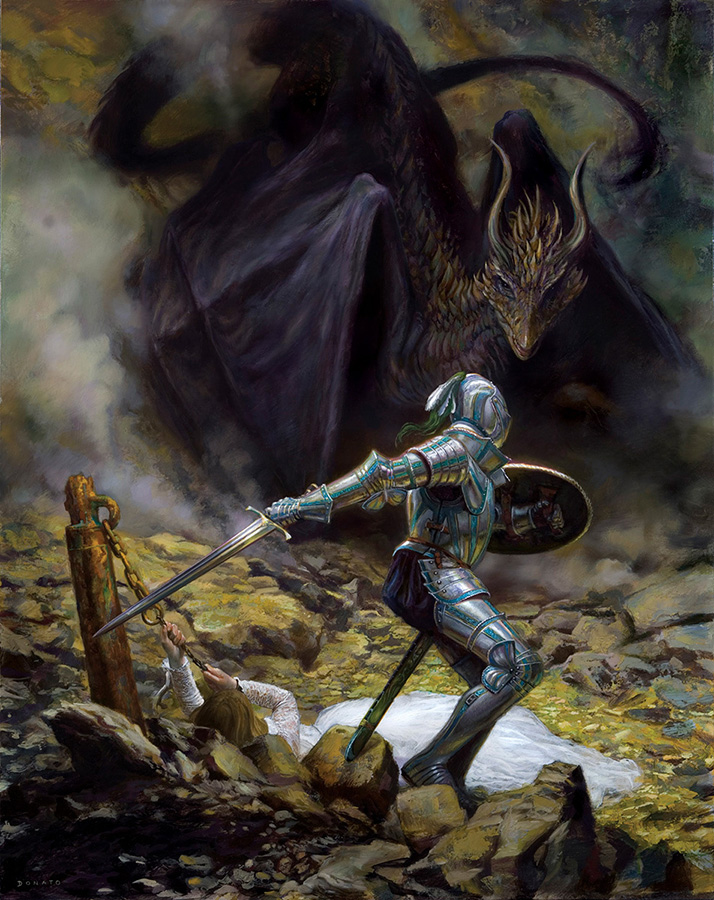
Enchanted: A History of Fantasy Illustration explores fantasy archetypes from the Middle Ages to today. The exhibition will present the immutable concepts of mythology, fairy tales, fables, good versus evil, and heroes and villains through paintings, etchings, drawings, and digital art created by artists from long ago to illustrators working today.
The exhibition Enchanted: A History of Fantasy Illustration is organized by the Norman Rockwell Museum in Stockbridge, MA, and will be on view here from June 12 through October 31, 2021.


